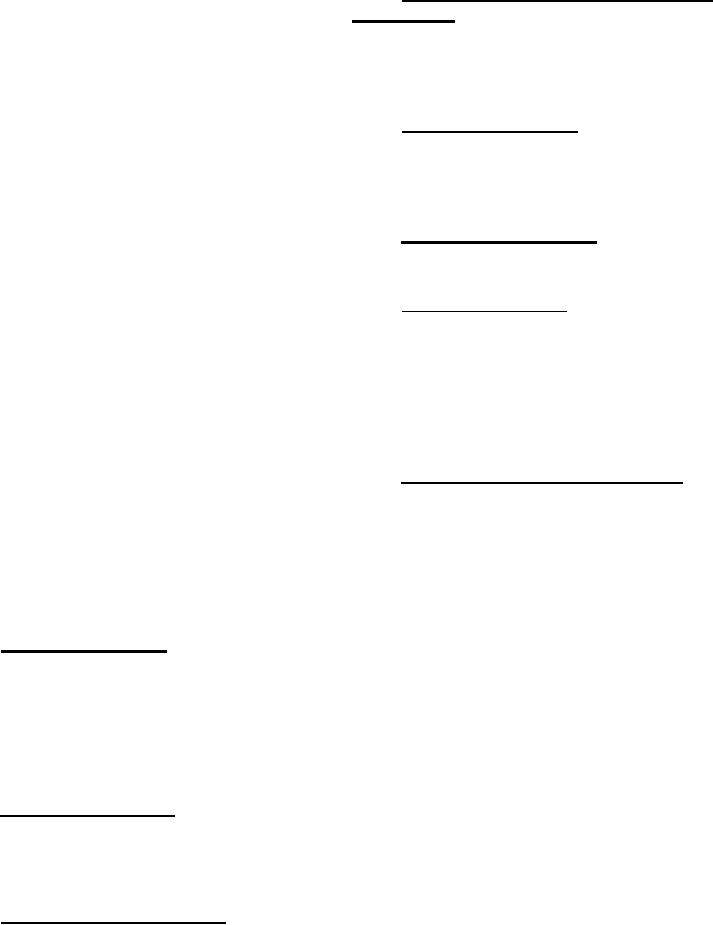
you to confirm that you understand what you are looking
ORDER OF USE. As a general rule, use the
borescope probes in the following order:
at.
4. Scan the inspection area thoroughly and in an
1. First, use probe No. 2 for all initial inspections.
orderly manner. Your goal is to do a thorough job in a
2. Then, use probe No. 3 to obtain a retrospect view
timely manner. There are a limited number of hours
in areas where you cannot obtain a retrospect view in
during which you can effectively borescope before
any other way or if there is danger of damaging probe
fatigue and boredom will threaten to render the results
No. 2.
of your inspection questionable.
3 . Finally, when you have discovered a
5. Note all inconsistencies. The purpose of
discrepancy or discontinuity by using probe No. 2 and
scanning is to provide an overview of all parts. An
then probe No. 3, use probe No. 1 to investigate that area
more closely.
inconsistency passing through your view should
automatically alert you to perform a more thorough
Now, let's look at some other important factors in
analysis of the affected area.
your responsibilities for borescoping.
6. Evaluate all inconsistencies. Use authorized
techniques and guidelines to determine the type and
Borescope Inspection
magnitude of all defects.
7. Report your conclusions. A definitive repent is
The configuration of the engine's components and
the only way you have to recall a previous condition.
the location of the borescope holes will determine how
Just as you must use the conclusions drawn by former
you must use the borescoping equipment to accomplish
inspectors, you must thoroughly report and document
the desired inspections. Referring to the physical
description of the engine in the manufacturer's technical
your own conclusions of existing conditions. Your
manual, you should be able to determine which
report must include an identification of the component
equipment you will need to use to complete the
and the surface involved. You should also describe the
inspection.
type and magnitude of the defect.
Now, let's quickly review the most important steps
8. Determine the serviceability of your engine. You
you must remember while doing a borescope inspection.
can determine the serviceability of your engine based on
First, review the MRC for inspection procedures,
the data you have collected from the borescope
inventory of tools and equipment, safety precautions,
inspection and the serviceability limits established by
preinspection procedures, and the procedure for engine
the MRC.
rotation.
PHYSICAL SIZE EVALUATION PROCE-
BORESCOPING PROCEDURE. Next, use the
DURES. Once you find a discrepancy, you must
following important steps and guidelines:
evaluate its physical size. You can use several different
1. Know your equipment. By knowing your
ways to make a physical size evaluation.
equipment, you will also know how to find what you are
Dimensional Data Charts. Using the dimensional
looking for. Before beginning your inspection, review
data charts that are usually located in the manufacturer's
your engine's construction information. This will
technical manual, you can estimate the physical size of
refresh your memory as to the internal construction of
a discrepancy by comparing the discrepancy area to a
your engine, the location and numbering of its
known dimension in the field of view.
borescope ports, and the convention for directional
orientation.
Lockwire. Another way to evaluate size,
2. Locate all inspection areas. The MRC will guide
particularly in regard to cracks, is to use a lockwire of a
you to all the areas you should inspect. The inspections
known diameter. Insert the lockwire into the field of
log book and the back of the MRC will tell you if a
view and place it next to the crack for size comparison.
condition was noted during the last inspection and
When using this method, take care to make certain the
should be surveyed again.
lockwire does not fall inside the engine. Using an
absolute reference for size, such as the lockwire of a
3. Establish internal reference points. Photographs
known dimension, is more reliable than estimating by
and drawings will allow you to choose a familiar feature
or compment as a point of reference. This will allow
the appearance of size through the borescope.
7-53

